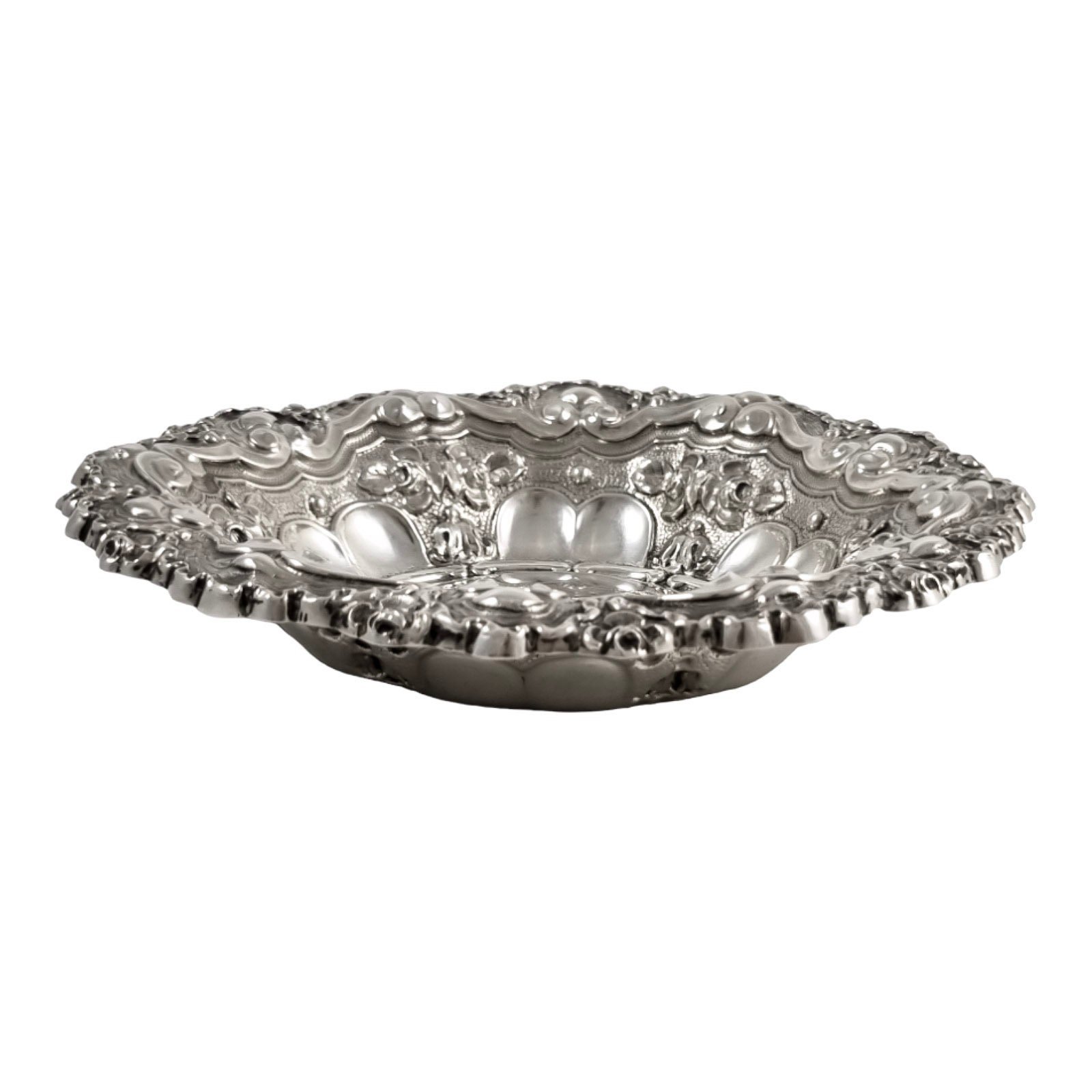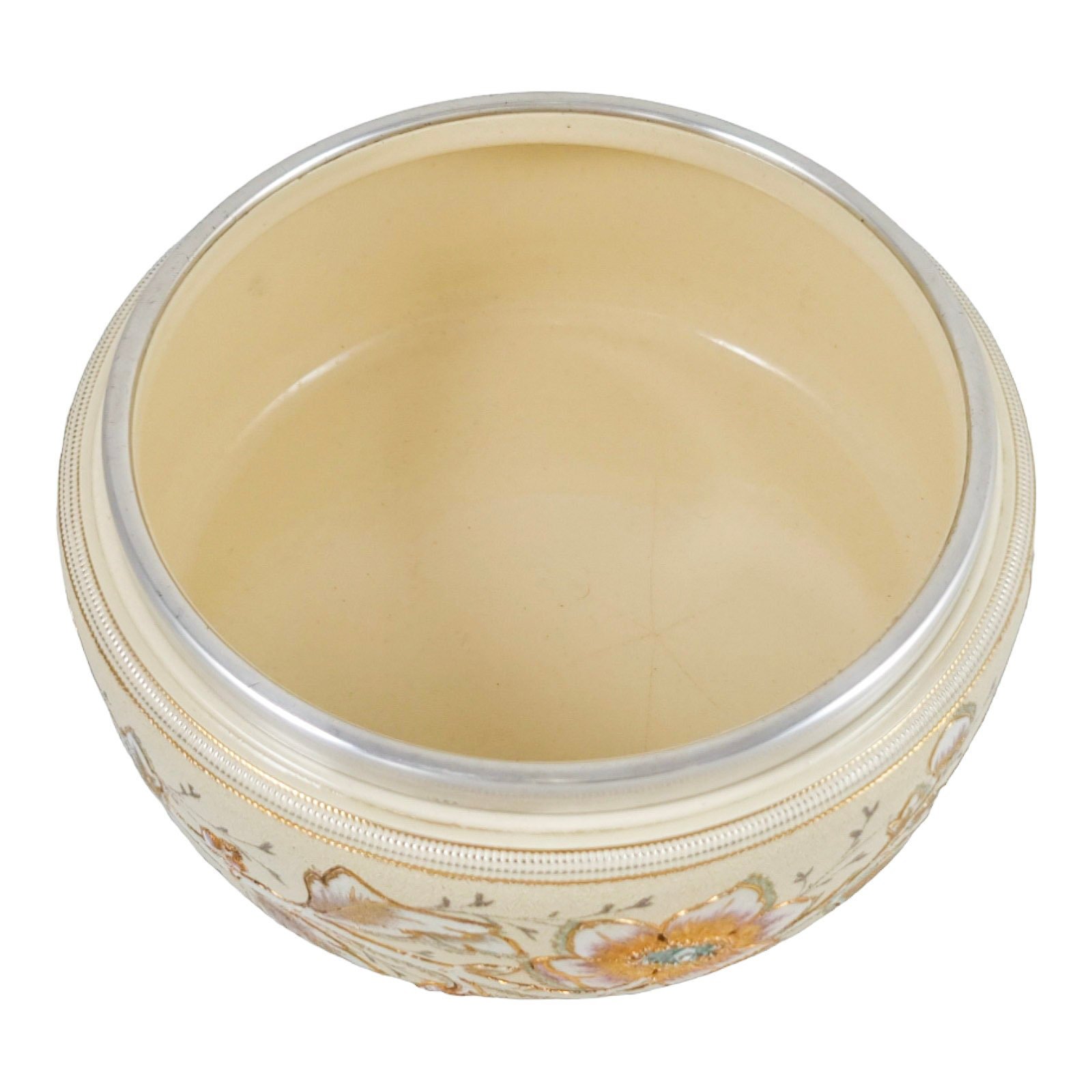Victorian Coalbrookdale iron copper pierced fruit dish with Greek sea gods
Wonderful mid-Victorian Coalbrookdale pierced shallow fruit bowl. Ornate openwork depicting scrolling foliage and Greek mythological gods of the sea including Amphitrite, Poseidon and Triton, as well as sea monsters, serpents and hippocampi.
The design is by a German architect and designer Karl Friedrich Schinkel who travelled to England to study the techniques of cast iron production before returning to Germany where he designed pieces for the famous Berlin foundry. The same motif used of the water gods and hippocampi (sea horses) with tridents on this plate is used on the famous Schloßbrucke (Palace Bridge) in Berlin. Arguably one of the grandest bridges in Berlin and a fantastic historical association with this design of plate.
The original of this dish in cast iron was exhibited at the Great Exhibition of 1851. This design was produced by Coalbrookdale over a period of 30 years, c. 1840 – 1870.
The earliest plates to be manufactured were made of cast iron, however the tricky details of this design did not lend itself to the manufacture with cast iron using relatively crude techniques. Later pieces were made of a more workable alloy and were then copper plated and patinated as bronze.
495 g
2.5 cm tall
20.5 cm diameter
Great antique condition. Tarnishing commensurate with age
Wonderful mid-Victorian Coalbrookdale pierced shallow fruit bowl. Ornate openwork depicting scrolling foliage and Greek mythological gods of the sea including Amphitrite, Poseidon and Triton, as well as sea monsters, serpents and hippocampi.
The design is by a German architect and designer Karl Friedrich Schinkel who travelled to England to study the techniques of cast iron production before returning to Germany where he designed pieces for the famous Berlin foundry. The same motif used of the water gods and hippocampi (sea horses) with tridents on this plate is used on the famous Schloßbrucke (Palace Bridge) in Berlin. Arguably one of the grandest bridges in Berlin and a fantastic historical association with this design of plate.
The original of this dish in cast iron was exhibited at the Great Exhibition of 1851. This design was produced by Coalbrookdale over a period of 30 years, c. 1840 – 1870.
The earliest plates to be manufactured were made of cast iron, however the tricky details of this design did not lend itself to the manufacture with cast iron using relatively crude techniques. Later pieces were made of a more workable alloy and were then copper plated and patinated as bronze.
495 g
2.5 cm tall
20.5 cm diameter
Great antique condition. Tarnishing commensurate with age
Wonderful mid-Victorian Coalbrookdale pierced shallow fruit bowl. Ornate openwork depicting scrolling foliage and Greek mythological gods of the sea including Amphitrite, Poseidon and Triton, as well as sea monsters, serpents and hippocampi.
The design is by a German architect and designer Karl Friedrich Schinkel who travelled to England to study the techniques of cast iron production before returning to Germany where he designed pieces for the famous Berlin foundry. The same motif used of the water gods and hippocampi (sea horses) with tridents on this plate is used on the famous Schloßbrucke (Palace Bridge) in Berlin. Arguably one of the grandest bridges in Berlin and a fantastic historical association with this design of plate.
The original of this dish in cast iron was exhibited at the Great Exhibition of 1851. This design was produced by Coalbrookdale over a period of 30 years, c. 1840 – 1870.
The earliest plates to be manufactured were made of cast iron, however the tricky details of this design did not lend itself to the manufacture with cast iron using relatively crude techniques. Later pieces were made of a more workable alloy and were then copper plated and patinated as bronze.
495 g
2.5 cm tall
20.5 cm diameter
Great antique condition. Tarnishing commensurate with age


































